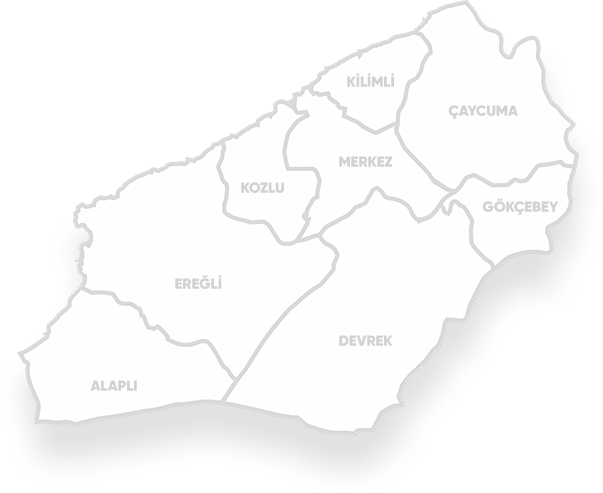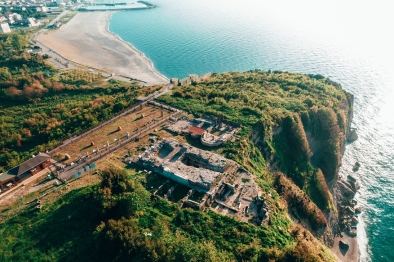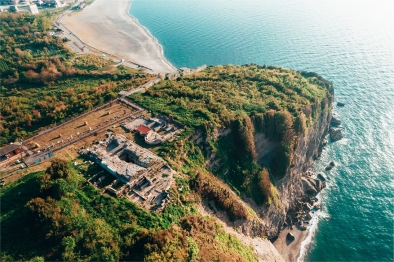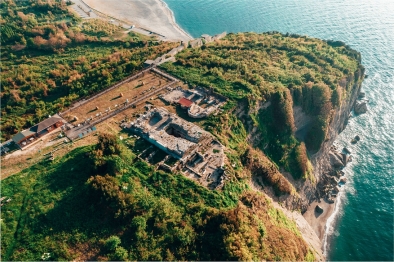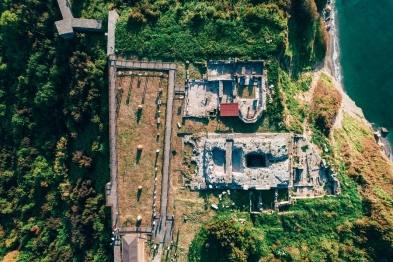
-
 About Us
About Us Detailed information about Zonguldak Coal Geopark and more...
About Us
About Us Detailed information about Zonguldak Coal Geopark and more... -
 Enjoy
Enjoy
-
 Discover
Discover Discover Zonguldak Geoparks
Discover
Discover Discover Zonguldak Geoparks -
 Learn
Learn
-
 Activities
Activities
-
 GeoNetwork
GeoNetwork
-
 Contact Us
Contact Us


Tios Ancient City
G-22 The ancient city of Tios is located in Zonguldak Province, Çaycuma District, Filyos Town. The first archaeological excavations were started in 2006. In ancient sources, the city was referred to as Greek Τίειον, Τίον, Τήϊον, Τίος and Latin Tieium, Tium, Tios, Tieion. B.C. Founded as a Miletus Colony by a priest under the leadership of Tios in the 7th century, the city remained under the rule of many kingdoms during the Classical and Hellenistic Periods. B.C. Tios-Tieion, which came under Roman rule in 70 BC, showed its real development in this period. The famous geographer Strabo states that Philetairos, the founder of the Attalos dynasty in Bergama, was from Tios and that a tribe known as Kaukon lived in the city. Strabo also states that for the Caukon, some say Scythians, some Macedonians, and some say a branch of the Pelasgians. It is also stated in some sources that there was another tribe called Bebrykler besides the Kaukons in the region and that these are the remains of the Phrygians who came to the region during the Early Iron Age.
The Western Black Sea region, which includes Tios, dates back to BC. In the 7th century, it was invaded by the Cimmerians. After the Cimmerians, who put an end to the Phrygian state, Lydian sovereignty was seen in the region for a while. Lydians are followed by Persians and Bithynians, respectively. The city was first built in BC. In the 4th century, under the rule of Herakleia Pontike (today's Kdz. Ereğli), it began to mint coins. With the death of Dionysios, the Tyrant of Heracleia, we see that his wife Amastris, who was of Persian origin, came to the throne. Tios-Tieion changed hands between Pontus and Bithynia for many years. As a result of an expedition carried out by the Roman General Aurelius Cotta in 70, it came under the rule of Rome. Tios-Tieion draws attention as a bishopric center during the Byzantine Empire. Tieion, which was an important port city in the Black Sea during ancient times, became a center where products such as fish, wine and grain were traded thanks to river and sea transportation. The city has become one of the most important commercial centers in the region, thanks to the existence of a highly developed road and seaway network connecting Tios to other regions and cities. Especially the big highway coming from the inner parts of the Region, namely the city of Claudiupolis, stretched to the north along the Billaios (Filyos) River, that is, towards the sea/Tios city. This road was also known as one of the main transportation destinations of the province called Provincia Pontus et Bithynia during the Roman Imperial Period. With this developed sea, river and highway network, the city mediated the opening of the products and raw materials produced in the inner regions of the Western Black Sea, first to the Black Sea and then to the outside world, through the port of Tios.
The ancient city of Tios-Tieion in Filyos, located on the first and second degree archaeological sites, consists of two separate parts, the Upper City and the Lower City. The acropolis, which is in the form of a dominant hill in the city topography, contains layers belonging to the founding period of the city. Spread over an area of approximately 60 hectares, the city has an acropolis, two necropolises and an ancient underwater harbor. Among the structures that can be seen in the city are the coastal walls, bath structures, aqueduct, theater, Byzantine church, basilica, vaulted gallery, various tombs, ancient harbor and breakwaters, which are dated to the Roman and Byzantine Periods. The castle built during the Roman period, a temple and a wall with three arches thought to belong to a large structure, the remains of the waterway that carried the water coming out of the Çayır Cave to the city, and the many finds obtained during the excavations are the material cultural values that have survived to the present day.
